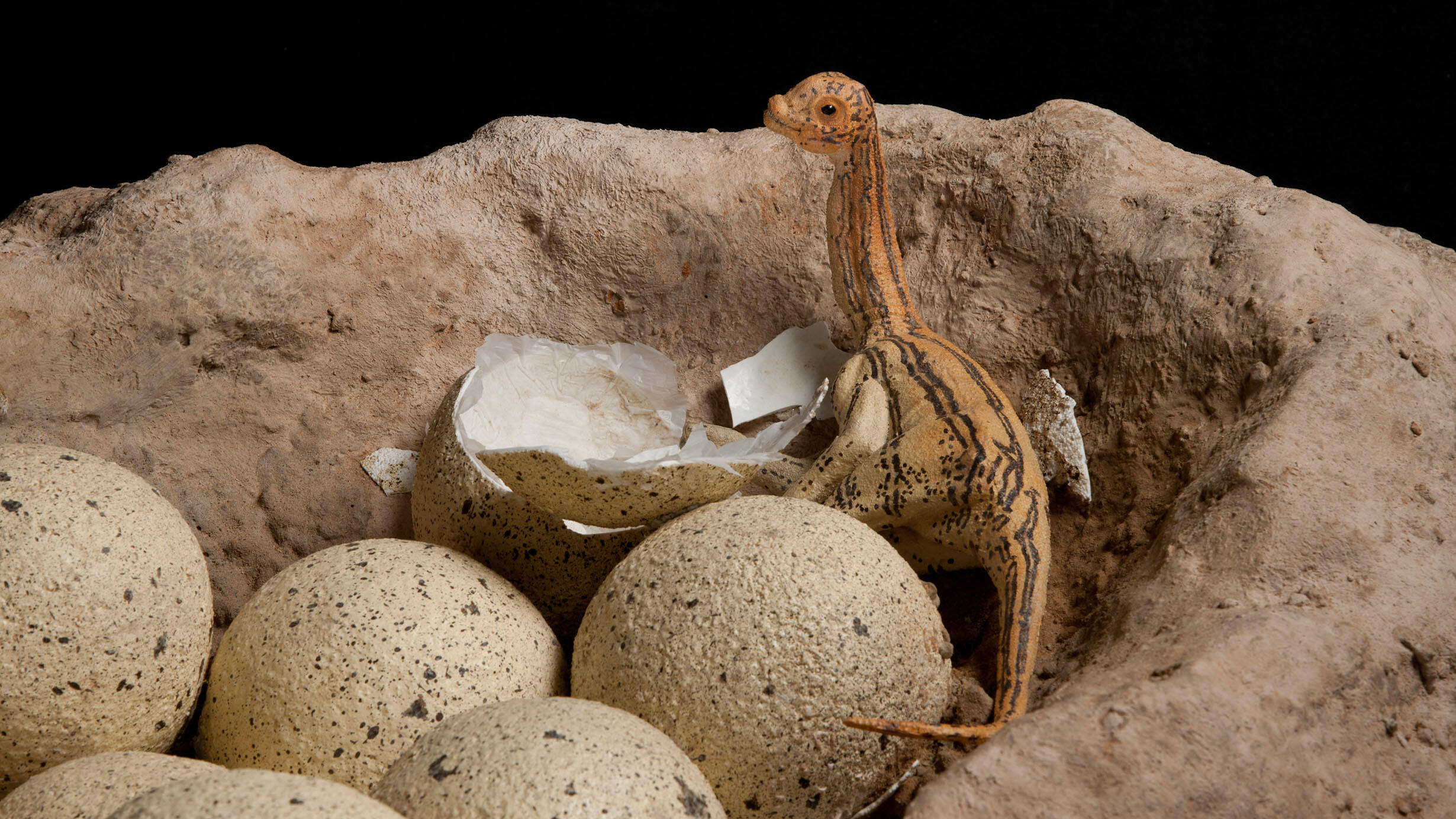Sauropod Dinosaur Babies
Part of the The World's Largest Dinosaurs exhibition.
 D. Finnin/© AMNH
D. Finnin/© AMNH All dinosaurs reproduced by laying eggs, just as living birds and many modern reptiles do. But surprisingly, the babies that hatched out of sauropod eggs were generally no bigger than a modern adult goose. Sauropods didn't start out extremely big—they just grew very, very fast.
When sauropods hatched, they generally weighed less than 11 pounds (five kilograms). Yet, in only about three decades, they grew to be adults that were 10,000 times heavier—or more. Such rapid weight gain per year has never been seen in any other land animal, living or extinct.
How Did Sauropods Grow So Big?
Studies of their bones show the animals initially gained as much as two tons each year. Before they were 20 years old, their growth rate slowed, but the animals continued to increase in size until roughly age 30—a decade after reaching sexual maturity.
Out of Harm's Way
The bigger a sauropod chick was, the better chance it had to escape predators. Sauropod chicks' ability to grow incredibly fast was an important factor in the evolution of large size in sauropods.
Too Big?
Could there have been a bigger sauropod? Probably not. Once they had grown enough to protect themselves from the largest predators, their size would have been limited by food availability. Sauropods may also have been getting close to the theoretical limit for body size—land animals heavier than about 100 tons (90,000 kilograms) are thought to be too big for bones to support them or muscles to move against gravity. But a new fossil discovery could always disprove this.
Compare Eggs
What does egg size tell us about the size of the adult? Not much! It might seem logical that large dinosaurs would have laid large eggs—and that huge sauropods must have laid the biggest eggs of all. But there's not always a clear pattern of a bigger egg leading to a bigger animal.
Auca Mahuevo, Argentina
The Auca Mahuevo site is one of the largest known dinosaur nesting sites in the world: thousands of eggs and nests spread over miles of ground. About 80 million years ago, herds of hundreds of female titanosaurs came here to dig out shallow nests, where they laid between 15 and 40 eggs. Some adults may have guarded the nesting ground to keep predators away, but young dinosaurs almost never reached adulthood. Yet because the females laid so many eggs, enough hatchlings survived to reproduce.
Not So Smooth
Eggshells aren't as smooth as they seem! Look at one under a microscope and you'll see many small holes, or pores. These pores form tiny canals through the shell that control moisture levels and allow the chick to breathe. The number, size and shape of pores is different for different species.
Tiny Windows on a Dinosaur's World
The number and size of eggshell pores give scientists clues about where the dinosaurs laid their eggs and how they built their nests. For example, very porous eggs dry out more quickly. A shell with big pores or lots of pores means that the eggs were covered, probably to protect them from predators or keep the environment constant.